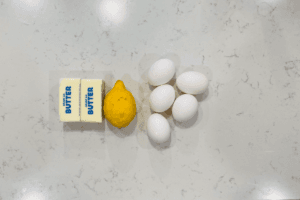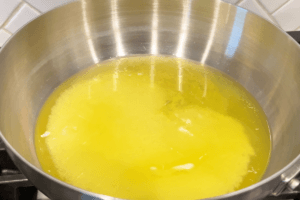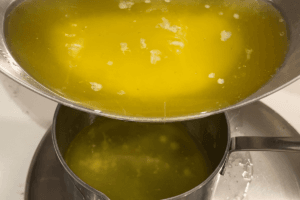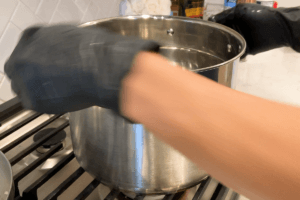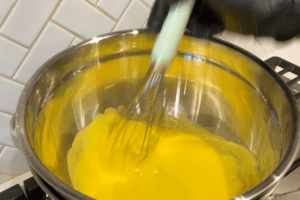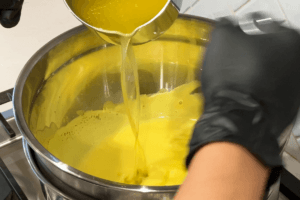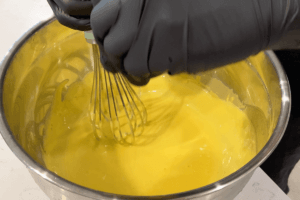No-Fail Hollandaise Sauce!

Hollandaise sauce is one of the five French mother sauces, celebrated for its smooth, buttery texture and subtle hint of lemon. It elevates dishes like Eggs Benedict, asparagus, and grilled fish. While it may seem tricky to prepare, our recipes offer detailed steps and key tips to help you create a perfect Hollandaise at home with ease.
History of Hollandaise Sauce
Despite its name suggesting a Dutch origin, Hollandaise sauce is believed to have been developed in France. It first appeared in French cookbooks in the 1600s under the name “sauce Isigny,” named after a Normandy region famous for its butter. Over time, the recipe evolved, and by the 1800s, it became known as Hollandaise sauce. Its rich, buttery flavor and versatility with eggs, vegetables, and seafood made it a staple in French cuisine and beyond.
Troubleshooting Tips
- Sauce too thick? Add a little warm water and whisk until smooth.
- Sauce too thin? Return it to low heat and whisk until it thickens.
- Sauce separated? Whisk in a teaspoon of warm water or another egg yolk to bring it back together.
Ways to Use Hollandaise Sauce
This rich, buttery sauce pairs beautifully with a variety of dishes, including:
- Eggs Benedict – Poached eggs on toasted English muffins topped with Hollandaise sauce. A classic breakfast favorite.
- Asparagus with Hollandaise – A simple yet flavorful side dish. Check out the recipe here!
- Grilled Fish or Steak – Spoon over grilled fish or steak for a creamy, buttery finish.
- Roasted Vegetables – Drizzle over broccoli, cauliflower, or carrots to enhance their natural flavors.
- Baked Potatoes – A luscious topping for baked or mashed potatoes.
Summary
Hollandaise sauce is made by whisking egg yolks, melted butter, and lemon juice. Originally from France, it pairs beautifully with eggs, vegetables, and seafood. With steady whisking and controlled heat, you can easily create a smooth, foolproof Hollandaise at home.
No-Fail Hollandaise Sauce!
Equipment
- 1 Double Boiler or Simmering Pot
- 1 Whisk
Ingredients
- 5 large egg yolks
- 2 sticks unsalted butter 1 cup clarified butter (warm but not hot)
- 2 tablespoons fresh lemon juice adjust to taste
- ½ teaspoon salt or to taste
- 1 tablespoon water if needed to adjust consistency
Instructions
- Gather Ingredients: Prepare them in advance to ensure a stress-free and smooth cooking experience.
- Prepare the Clarified Butter: Place two sticks of butter in a saucepan and melt them over the lowest heat setting to prevent burning or browning. As the butter melts, you will notice a clear, golden liquid separating from the white milk solids.
- Once fully melted, carefully pour the clear liquid into a separate container, leaving the milk solids behind at the bottom of the pan. This process creates clarified butter, which helps produce a smoother, creamier Hollandaise sauce with a rich, buttery flavor.
- Set Up a Double Boiler: Fill a medium saucepan with 1–2 inches of water and bring it to a gentle simmer. The water should be hot but not boiling. Place a heatproof bowl over the saucepan, making sure the bottom of the bowl does not touch the water. This indirect heat will help cook the egg yolks gently.
- Whisk the Egg Yolks: Add egg yolks and a small splash of water to the bowl. Using a whisk, start beating the yolks constantly. To prevent overheating, move the bowl on and off the steam every 1–2 minutes while whisking. Continue this process for about 10 minutes, until the mixture becomes slightly thick and pale.Tips: Be careful! If the bowl gets too hot to touch, remove it from the heat for a moment. Too much heat can cause the yolks to scramble.
- Slowly Add the Clarified Butter: When the egg mixture has thickened but is still smooth and pourable, begin adding the clarified butter a little at a time. Pour in a small amount and whisk vigorously until it is fully mixed before adding more. Repeat this process slowly to create a rich and creamy sauce.
- Season the Sauce: Once all the butter is mixed in, add salt to taste. Squeeze in fresh lemon juice and whisk well to combine. The lemon balances the richness of the butter and gives the sauce a fresh, tangy flavor.
- Final Touch: Your Hollandaise sauce is ready! It should be smooth, creamy, and slightly thick. Serve immediately over Eggs Benedict, steamed asparagus, grilled fish, or roasted vegetables for a delicious finishing touch.
Video
Notes
- Use Low Heat – Melt butter on the lowest setting to prevent browning or burning.
- Clarify the Butter – Pour off the clear golden liquid, leaving milk solids behind for a smoother sauce.
- Set Up a Proper Double Boiler – Ensure the bowl does not touch the simmering water to prevent overheating.
- Whisk Constantly – Keep whisking the egg yolks and move the bowl on and off the heat every 1–2 minutes to avoid scrambling.
- Control the Temperature – The bowl should be warm but not too hot to touch to prevent curdling.
- Add Butter Slowly – Incorporate clarified butter gradually, whisking well between each addition for a creamy texture.
- Adjust Consistency – If the sauce is too thick, add a teaspoon of warm water and whisk. If too thin, return to low heat and whisk until it thickens.
- Fix a Broken Sauce – If the sauce separates, whisk in a teaspoon of warm water or an extra egg yolk to bring it back together.
- Season at the End – Add salt and fresh lemon juice after emulsifying the butter for the best flavor.
- Serve Immediately – Hollandaise sauce is best enjoyed fresh. If needed, keep it warm in a heatproof bowl over warm water, but avoid direct heat.


